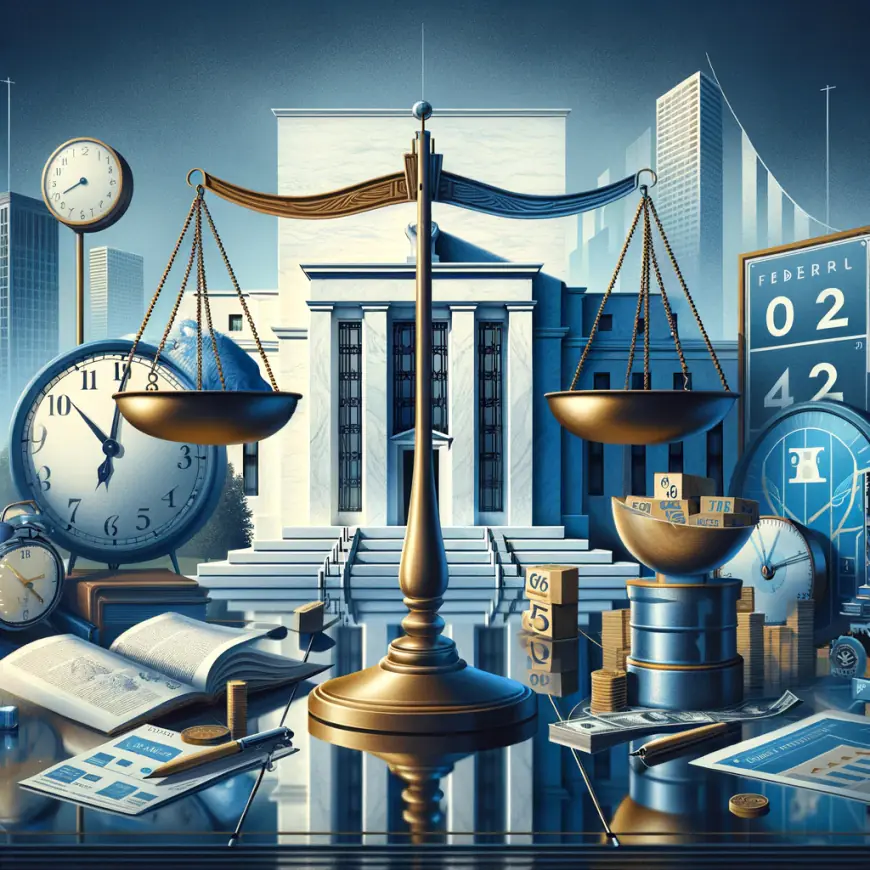Federal Reserve is likely not going to cut interest rates this year
The recent data of the U.S. economy has put the brakes on any fantasies about the Federal Reserve cutting interest rates anytime soon. With the latest figures on inflation heating up and unemployment claims cooling down more than anticipated, it looks like the Fed’s big chair might just stay put, keeping the interest rates at […]

The recent data of the U.S. economy has put the brakes on any fantasies about the Federal Reserve cutting interest rates anytime soon. With the latest figures on inflation heating up and unemployment claims cooling down more than anticipated, it looks like the Fed’s big chair might just stay put, keeping the interest rates at their two-decade high. And let’s not forget, while some pockets of the economy seem to be taking a nap, particularly consumer spending, the overall message given by the latest stats is one of a weirdly-strong economy that’s not ready for a bedtime story about rate cuts. And probably won’t be for quite some time.
Economic Indicators Playing Hard to Get
Let’s dive a bit deeper into this economic soup. Prices that producers charge have gone beyond what our economists expected in February, and the line for jobless benefits got shorter, suggesting fewer people are getting laid off. Earlier, data had already shown that prices for the rest of us, the consumers, also climbed up a bit faster than your morning jog last month. Now, if that’s not enough to keep the Federal Reserve’s hands tied, I don’t know what is.
The Fed have been pretty clear about their game plan. They’re not about to make borrowing cheaper until they’re really, really sure that prices aren’t going to keep jumping up and that everyone who wants a job can get one. And from the looks of it, they’re nowhere near convinced.
Sure, we saw a bit of a lag in how freely people are opening their wallets at stores, but that’s just one piece of the puzzle. When it comes to making the call on interest rates, the Fed’s eyes are glued on inflation and employment numbers. And right now, those numbers are telling them to stay the course, keep rates where they are, and not even think about touching that rate-cut button for a while longer.
A Closer Look at the Crystal Ball
Now, let me sprinkle a little context on this. Inflation, that sneaky thief that slowly empties your wallet without you noticing, had started to chill out over the past year, thanks in part to cheaper goods and power. But like any good plot twist, recent reports suggest this calm might be the quiet before a massive storm. Prices for things we buy regularly have started to increase again.
And it’s not just about paying more for last year’s fashion or second-hand cars; energy costs have also jumped back into the ring, pushing overall price increases above what analysts had guessed. This is the kind of stuff that keeps Federal Reserve officials up at night, wondering if they need to keep interest rates high to prevent prices from spiraling out of control.
Meanwhile, when it comes to jobs and unemployment, it turns out fewer people have been signing up for unemployment benefits than we thought. This is good news because it means the job market is strong, but it’s also another reason for the Fed to keep a tight grip on interest rates.
Economists are now pushing back their forecasts for when the Fed might start cutting rates. Some say not until mid-summer, others think even later. The takeaway here? Don’t hold your breath for cheaper loans or mortgages anytime soon, guys.
What's Your Reaction?









































































































